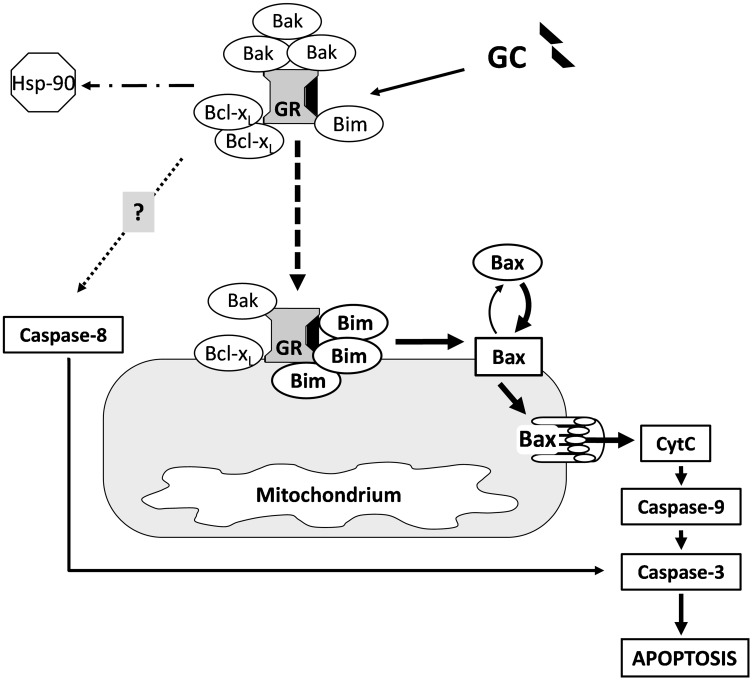Fig. 6.
Hypothetical model of the GC-induced apoptosis of thymocytes via the regulation of the mitochondrial apoptotic pathway by members of Bcl-2 protein family. Upon high dose GC treatment the GR translocates to the mitochondria (dashed arrow) where its interaction increases with Bcl-2 family proteins, especially with Bim. Then Bax is presumably activated by Bim, leading to permeability pore formation in the mitochondrial outer membrane, and the leakage of Cytochrome C into the cytoplasm, which triggers the caspase-cascade. The accumulation of Bax in the mitochondrial outer membrane is most likely further enhanced by the increased cytoplasmic association of the liganded GR and the Bcl-xL which suspends the latter’s inhibitory effect on the mitochondrial pore formation by Bax. The role of the GR-Bak association remains to be elucidated. Caspase-8 activation (extrinsic pathway) may be the result of the interaction between the GR and other apoptotic pathways (dotted arrow)

